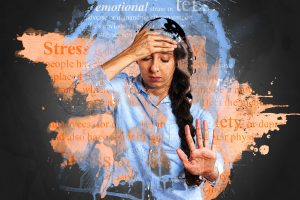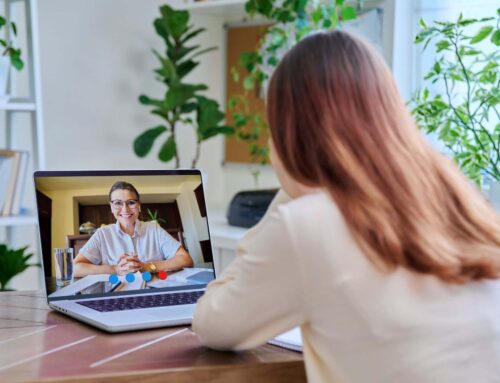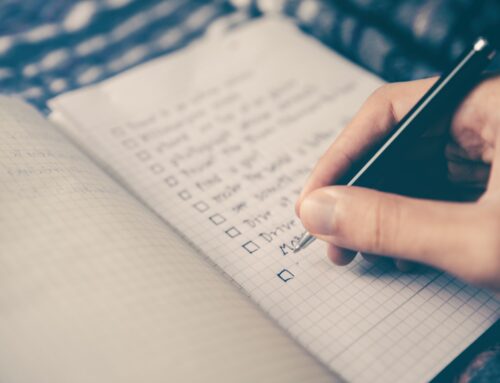Anxiety seems to be becoming more and more prevalent in today’s society. The reasons for this are varied, but the reality of what we are experiencing is nonetheless, well, stressful.
What is an Anxiety Attack?
But what is an anxiety attack, exactly? And how can someone know if they are experiencing one?
An anxiety attack is an onset of symptoms in response to a trigger. It is the perception of danger rather than the presence of danger.
Here are some common physical symptoms of anxiety:
- Restlessness
- Racing/pounding heart
- Shallow and/or rapid breathing
- Sweating
- Shaking
- Limb weakness
- Chest pain/tightness
- Nausea
- Dizziness
- Knot or butterflies in stomach
- Derealization/depersonalization
And here are some other emotional or mental symptoms:
- A sense of impending danger
- A desire to escape
- Confusion/inability to think clearly
- Feeling panicky
- A sense of losing control
- Anger/irritability
What’s the Difference Between Anxiety and a Panic Attack?
These symptoms of anxiety tend to appear more gradually than those of a panic attack. A panic attack frequently has much more urgent symptoms, a fast onset, and a feeling that the person is dying.
 It is not unheard of for people experiencing panic attacks to go to their local emergency rooms or call ambulances because they truly believe they are dying.
It is not unheard of for people experiencing panic attacks to go to their local emergency rooms or call ambulances because they truly believe they are dying.
People experiencing panic attacks often have to stop whatever they were doing and immediately manage their symptoms. Panic attack symptoms can also fade as suddenly as they appeared.
Anxiety attacks tend to have a slower onset (though they can happen suddenly), and longer-lasting symptoms. The symptoms can seem more manageable in the moment, and many people try to continue about their day, even though their body is experiencing heightened anxiety. Sometimes anxiety symptoms grow to become so overwhelming that the person does need to stop and take a break to calm down.
How Do I Know if I’m Having Anxiety?
If you are experiencing the above listed symptoms on a regular basis and they are interfering with your daily functioning, you may be struggling with anxiety. If you have ever questioned whether or not you are having an anxiety attack or a panic attack, it can be helpful to speak with a provider, whether it is a doctor, a counselor, or a therapist, to clarify your symptoms.
 Certain medical conditions can also mimic anxiety symptoms, such as hyperthyroidism. It is important to rule out the possibility of medical conditions or side effects of medication before knowing whether you are experiencing anxiety attacks, so speaking with your primary care physician can be a helpful start.
Certain medical conditions can also mimic anxiety symptoms, such as hyperthyroidism. It is important to rule out the possibility of medical conditions or side effects of medication before knowing whether you are experiencing anxiety attacks, so speaking with your primary care physician can be a helpful start.
I also find it helpful to use assessments when evaluating anxiety. When taken by yourself, these are not diagnostic, but they can help name some more symptoms, or bring clarity to the whole of what you may be experiencing.
A common example of this would be the Beck Anxiety Inventory, but numerous options can be found through searching online. Again for emphasis, on your own, these are not diagnostic, but they can help bring some more clarity to what you are experiencing.
Types of Anxiety Disorders
There are several different types of anxiety disorders, depending on what the root causes might be. The most common adult anxiety disorders include: Generalized Anxiety Disorder, Specific Phobias (like agoraphobia), Panic Disorder, Social Anxiety Disorder, Post-Traumatic Stress Disorder, and Substance/Medication-Induced Anxiety Disorder.
There are some other mental illnesses in which anxiety is a large part of what the person may be experiencing, such as Obsessive-Compulsive Disorder or Somatic Symptom Disorder. And there are other, more short-term diagnoses used for when the anxiety is a result of a recent, major change in the person’s life, such as Adjustment Disorder or Acute Stress Disorder.
If you believe you are experiencing an anxiety disorder, please contact a physician or mental health provider in order to diagnose and treat it.
How to Cope with an Anxiety Attack
Once you are able to rule out potential medical diagnoses/causes or substance/medication side effects, there are several steps you can take to help reduce your symptoms of an anxiety attack. I will enumerate a few, but it is also important to remember that many of these coping skills take practice.
The first time you try mindfulness, you may not be very good at it. It takes time for our brains to adjust to new things. And the best time to practice is when you aren’t yet feeling anxious. If you have never done grounding or progressive muscle relaxation before and you try it for the first time in the middle of an anxiety attack, it probably won’t be effective. Like almost anything in life, practice makes the skills useful. Then, when anxiety does begin to take over, your brain and body already are familiar with what to do.
Mindfulness
This is one of the big names in coping skills right now, and for good reason! Anxiety is all about things you can’t control, and mindfulness is all about being present in the moment in your body — something you can control.
Here are some examples:
- Grounding
There are several sensations our brains ignore throughout the day because it is information that our minds do not need. I teach clients to think, “Where are your feet?” when they feel anxiety coming on.
This is a cognitive and physiological trigger — to remind yourself that you are in the present moment, the only moment you can control; and to think about how your feet feel.
What do your shoes and socks feel like? What does the ground underneath your feet feel like? Taking a few moments to notice those bodily sensations and cognitively reminding yourself to stay in the present can help bring your anxiety symptoms down a notch.
- Engage the Senses
In a similar fashion to grounding, you want to engage your physical senses when you feel your mind taking off. Look for five things around you that you have noticed before; then four things you can hear; three you can feel; two you can smell; and one you can taste.
Or slowly eat something with varied taste and texture, taking time to notice each aspect of that snack. Get a cold drink of water. Put some aromatherapy lotion on your hands and breathe it deeply in for a few minutes, enjoying the smell.
There are so many ways to engage your physical senses when you feel anxiety symptoms overtaking your mind. Find what works for you so you can take it with you wherever you go.
- Mobile Apps
Several apps with grounding techniques, music, and guided mindfulness are now available. I even have Instagram collections of beautiful photography so that I can take a few moments to scroll through peaceful pictures when I feel overwhelmed. If anxiety attacks are a frequent occurrence, then utilizing one of these apps might be well worth it.
 Exercise
Exercise
Similar to engaging your physical senses, exercise is all about getting your body moving and doing activities that involve using muscles in ways you don’t normally use them. There are also added benefits of endorphins, long-term health and fitness, and feeling strong and capable. Yoga is a fantastic way to combine mindfulness and exercise.
Nature
Go for a walk! Get outside and be around non-human living things (i.e. plants and animals). Breathe in fresh air and enjoy the warm sun or cool breeze (again — engage those senses). Biodiversity is important to our mental and physical health, so taking time to enjoy the great outdoors is a great anxiety coping skill.
Snuggle a Pet
Whether you’re a dog person or a cat person, interacting with a beloved pet is a great way to reduce anxiety symptoms. Take a few moments to cuddle with your adorable critter.
Deep Breathing
“Take a deep breath” is actually a little more complicated than it sounds, especially when you feel like you can’t. This is one of those coping skills that takes practice.
First, you want to make sure you breathe from your stomach, not your upper chest. Make sure you can see your belly moving in and out. Second, you want your exhales to be longer than your inhales.
When you inhale more than exhale, it can escalate into hyperventilating, which will compound anxiety symptoms (there’s lots of biochemistry involved in this explanation that would be better explained by a doctor).
The most helpful way to make sure you are exhaling more than you inhale is to count. I even recommend holding your breath in between. A helpful starting place is to inhale for 4 seconds, hold for 5 seconds, and exhale for 6 seconds. Practice this when you aren’t feeling anxious so that controlling your breathing becomes second nature to you.
Progressive Muscle Relaxation
This may be best done initially with guidance. There are several videos online that can walk you through PMR. The basic idea is to go muscle group by muscle group and individually tense them up before relaxing them. This helps you identify where you may already be holding tension, followed by intentionally releasing that tension. People often start with their facial muscles and slowly move down the muscle groups of the body.
Paradoxical Acceptance
I often imagine anxiety as a vibrating ball of energy that a client is desperately trying to control by squeezing it. But this ball actually tends to just vibrate harder the more you try to force it to be calm.
We can get so worried about anxiety symptoms that we try harder and harder to control them, but it actually just makes the anxiety worse because it becomes all we can think about. Instead, try some paradoxical acceptance.
Learn to accept your anxiety for what it is and lean into it. Accept that it is going to be your friend for a while and let it join you as you go about your day. And be sure to give yourself some grace rather than being frustrated at having anxiety.
Thought Tracking
I don’t like the term “irrational fear,” because I find that fears tend to come from somewhere. At some point, it was a very rational fear or worry that has been extended and generalized into other situations.
Our anxieties and fears come from very real thoughts and experiences, so it can be important to begin to trace the thoughts that lead to anxious feelings. When you begin to feel anxious, record what you were thinking about before the symptoms started.
Begin keeping a thought record, and then challenge those thoughts. Are they true? What is the evidence for and against those thoughts? Is the situation one that you can control?
Don’t let your thoughts run rampant against you. Record them and challenge them — not in a way that ignores the negative thoughts about yourself and life; but rather in a way that overcomes the negativity.
Journaling
 This can go hand-in-hand with recording thoughts, but it doesn’t have to only be done in a written manner. Art journaling and other creative pursuits can be a great way to process emotions and anxiety.
This can go hand-in-hand with recording thoughts, but it doesn’t have to only be done in a written manner. Art journaling and other creative pursuits can be a great way to process emotions and anxiety.
Get a coloring page, and use colors that describe how you’re feeling today. Paint what the anxiety looks like only using abstract shapes. There are limitless prompts for journaling out how your anxiety feels.
Clean
Our environments often reflect our minds. If you are feeling tense and anxious and are surrounded by mess and clutter, chances are it’s making your anxiety worse.
Clear out some clutter. Throw away or give away something you don’t need or use. Clean out some spaces, and let your environment reflect how you want to feel inside.
List Things You are Grateful For
One of the fastest ways to engage positive thinking is to concentrate on what you are thankful for. Make a list of things that are going well in your life or that you are grateful for, and spend some time appreciating what you have.
Laugh
Enjoy something humorous, whether through a movie, show, or stand-up comedy series. Find some jokes or puns that make you smile. Call a friend who you know can make you laugh and look for the joy in life. This can be a great way to release tension in your throat, chest, and stomach.
Plan Ahead
If you know what your anxiety triggers are, make sure you are planning ahead for when they happen. Prepare your thoughts and practice your coping skills.
For example, if you know you have test anxiety, be sure you are not only preparing for the test material, but also practicing grounding and deep breathing so that you can implement those during the test. Challenge those fears of failure and focus on positive outcomes independent of test results. Preparation is key to battling any mental illness.
Medication
If your anxiety is interfering with your ability to function in your daily life, then it might be time to consider medication. A doctor can prescribe situational or scheduled medications for anxiety, depending on what would fit your needs better.
It is important to take medications as prescribed, but also not to rely on them as the only option. When treating anxiety, medication can tone it down enough so that you can learn other coping skills as well. Medication, counseling, and coping skills often work best when used together.
Counseling
Usually people wait until their lives feel out of control before they seek out counseling, when learning coping skills early on could have helped considerably. Processing the roots of anxiety can provide long-term relief.
If you feel that anxiety attacks and symptoms are beginning to affect your daily functioning, please do not hesitate to find someone to talk to about it all, whether it’s one of the counselors here at our office, or another in your area.
“In a bunker,” courtesy of Aaron Blanco Tejedor, unsplash.com, CC0 License; “Stress,” courtesy of TheDigitalArtist, pixabay.com, CC0 License; “Balance,” courtesy of LibelSanRo, pixabay.com, CC0 License; “Journaling,” courtesy of Hannah Olinger, unsplash.com, CC0 License





